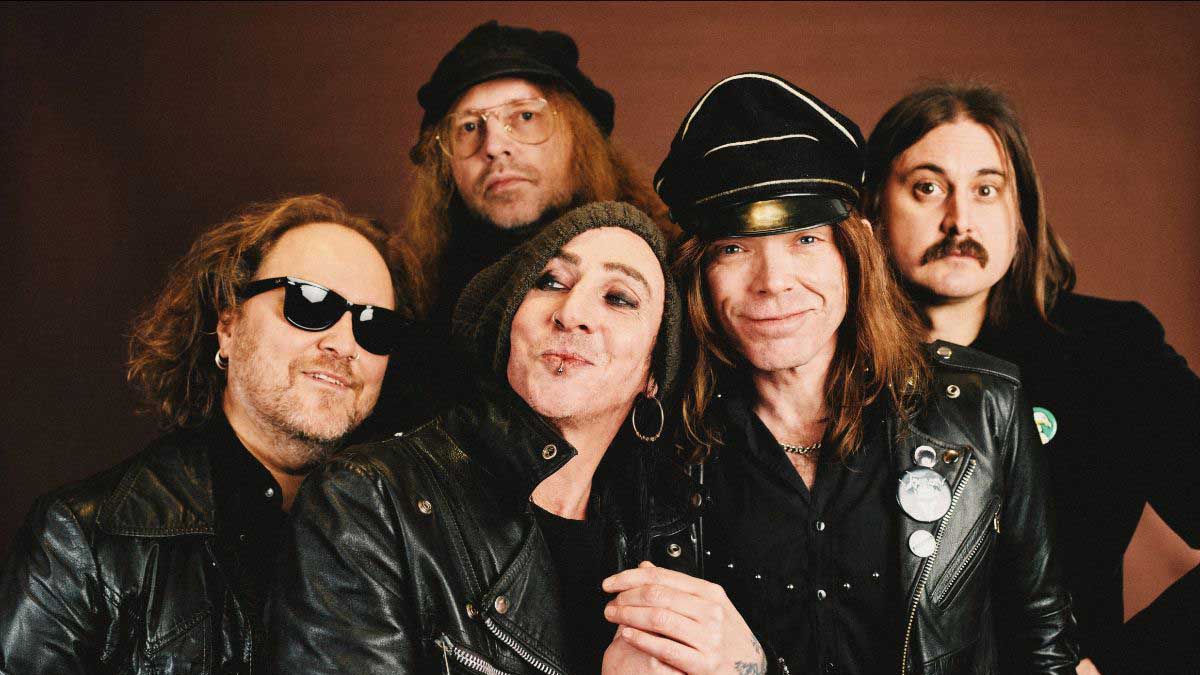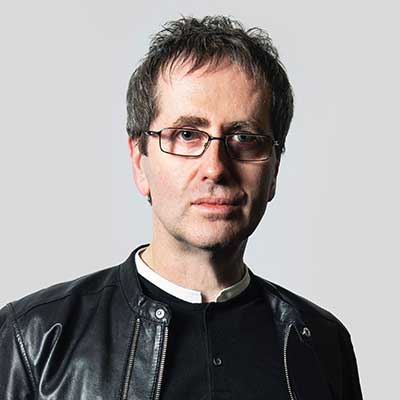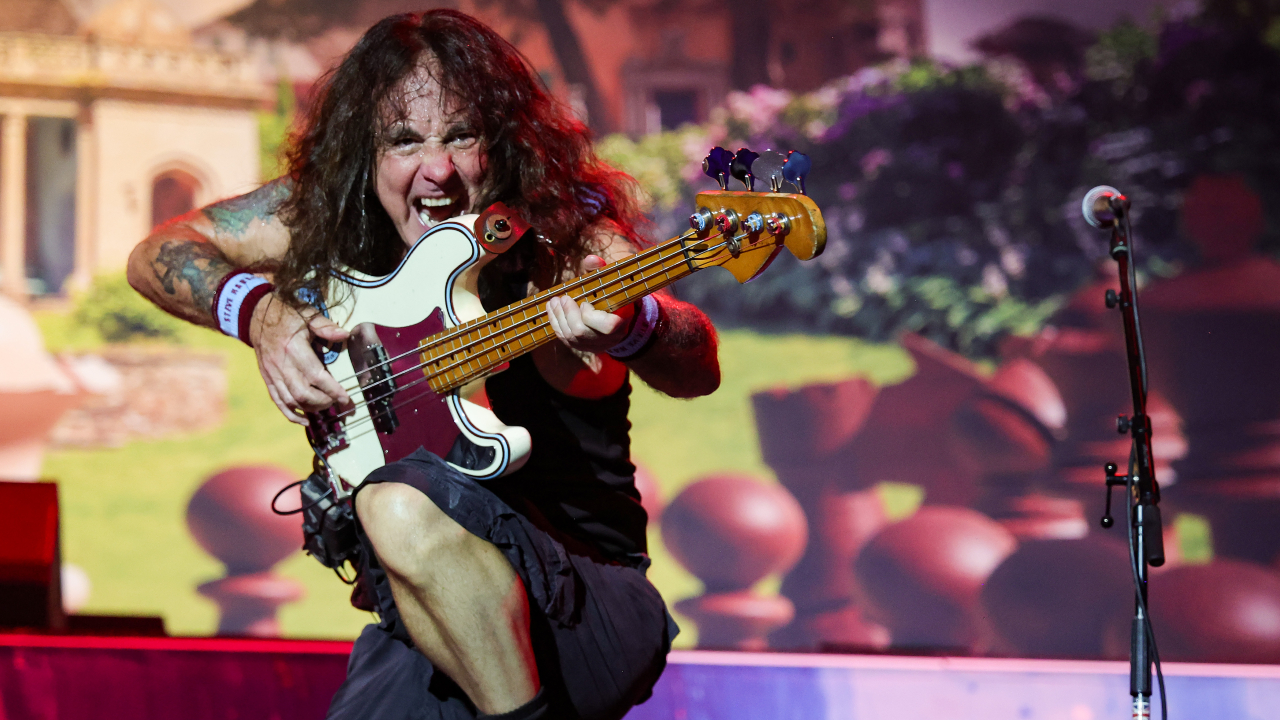The Sky's the limit: The return of rock'n'roll heroes The Hellacopters
Returning after a 14-year hiatus, Swedish rock mavericks The Hellacopters look at where it all went wrong, and right

The Hellacopters, now firmly back in the saddle with Eyes Of Oblivion – their first album since 2008 – have teetered on the brink of making it big for more than a quarter of a century. Consider their time-honoured stock in trade (an incendiary, soul-infused combination of Stooges, Ramones, Kiss and MC5), and that they arrived at the vanguard of the widely touted, media-supported Swederock movement of the mid-90s, and their lack of mainstream success borders on baffling.
Examine all available evidence closer, however, and all becomes clear. Hellacopters co-founders Nicke ‘Nick Royale’ Andersson and Andreas ‘Dregen’ Svensson have never, ever accepted that when it comes to the business of making rock’n’roll, you can’t have your cake and eat it. And since the pair originally hooked up as teenage “Kiss nerds” in early-90s Stockholm – when 17-year-old Dregen borrowed 18-year-old Andersson’s ID in order to gain entry to the city’s Ritz nightclub – they have both eaten an awful lot of cake. Not to mention, in Andersson’s case at least, a healthy portion of humble pie.
“Who would’ve thought we’d leave some kind of legacy for some people?” the Hellacopter-in-chief muses, considering Eyes Of Oblivion’s rave reviews and the social media heat that has greeted the quintet’s on-form reanimation. “We have to nurture that, and be serious about it. It may be kind of funny to play rock’n’roll, but it feels pretty good.”
In light of all subsequent events, it should come as no surprise that The Hellacopters started life as a side project for both central protagonists. Strap yourself in, things are about to get complicated…
When the band formed, Andersson was drumming for death-metal band Entombed and Dregen was the guitarist for the Backyard Babies (concurrent to being Andersson’s roadie). Following the ’Copters’ second album, 1997’s Payin’ The Dues, Dregen left to concentrate on Backyard Babies, while Andersson set to work on Grande Rock, the 1999 album that saw the band developing from the garage to embrace a decidedly more classic rock sound.
That same year, both Dregen and Andersson appeared with Ginger Wildheart on the Supershit 666 EP. With the ’Copters’ fifth album, By The Grace Of God (2002), just released, Andersson was invited by Wayne Kramer to join the remaining members of the MC5, with whom he toured (as guitarist) during 2003 and 2004.
While on tour in the States, Andersson made the acquaintance of Sonic’s Rendezvous Band singer Scott Morgan, who presented him with the opportunity to scratch his enduring garage-rock itch as drummer with The Hydromatics, and latterly with the more Stax/soul-inspired The Solution (formed in 2004 and, according to Andersson, still operational).
Sign up below to get the latest from Classic Rock, plus exclusive special offers, direct to your inbox!
With The Hellacopters still attempting to break through a resilient commercial glass ceiling with their sixth album, Rock & Roll Is Dead, Andersson formed Death Breath, a “pure death metal” band who made two albums in ’05 and ’07. He had further side projects, some involving Dregen (who was also, lest we forget, still trying to break Backyard Babies through into the rock mainstream).
Forget cakes, if you’re looking for an even more pertinent metaphor, it’s that the best way to enjoy a successful marriage is probably not to engage in an endless succession of extra-marital affairs. Similarly, if you’re looking to break a band, it’s probably best not to have another three on the go at the same time.
“Ah, well, yeah. I suppose when you put it that way…” Andersson says, laughing. “But maybe I’m a little bit different in the way that I see things concerning music. I never saw anything as a career move, ever. And I still don’t. When I started with Entombed, the big goal was to make a demo, and then the second goal was to make a second demo. It’s always been that way – day by day.”
“The original plan with The Hellacopters was to release seven-inch singles in editions of three hundred copies,” says Dregen. “So when we got offered our first deal, on a really small independent label, we were like: ‘Isn’t this really a sell-out, to do an album?’”

Maybe this explains everything. The Hellacopters never attained mainstream success because they didn’t crave mainstream success. Rather than knuckle down and focus single-mindedly on developing a stylistically linear marketable product – attractive to record labels and media alike – Andersson wanted to try everything. To indulge all aspects of an unusually broad musical taste.
“First and foremost, I’m a music fan, and if there’s something I really get into I feel the urge to try it myself,” he says. “The idea with The Solution was to try to do something Motown crossed with southern soul. I’m from Sweden ,which makes it seem a bit far-fetched, but then we had Scott Morgan to make it okay.
“I just wanted to do it because I love the music so much; I just wanted to see if it was do-able. I mean, there’s not many other things that I’d want to try, because I do like guitar-based music… Maybe a country record?” he laughs.
Obviously there’s nothing wrong with being rock’s renaissance man – to pursue parallel lives as a baseball-capped garage-rock frontman, a death metal drummer, a Detroit rock and soul guitar player and, potentially, a country singer – but it’s hardly the most marketable of propositions.
And as the years passed, life in The Hellacopters (with a line-up then completed by Robert ‘Strings’ Dahlqvist on guitar, Kenny Håkansson on bass, Anders ‘Boba Fett’ Lindström on keyboards and Matz Robert ‘Robban’ Eriksson on drums) became increasingly predictable. Their profile as ever-reliable cult favourites remained static, and Andersson finally put the band on ice in 2007, before releasing Head Off, a coolly received swan song covers album, in 2008.
“I thought: ‘Isn’t it better to stop when it actually feels like we’re doing something good, rather than just keep hammering it out?’” Andersson says of the split. “I mean, I did ask the question that I was hoping the other guys would ask themselves, which was: ‘Why do we do this?’ If it’s only to pay the bills – and while we weren’t rich, it did pay the bills – that cannot be the reason for it. And you grow up and a lot of times you drift apart, even if you’re in the same band.”
Unsurprisingly, The Hellacopters’ break up didn’t stem Nicke Andersson’s unquenchable desire to make music; he worked on a solo album (“After four or five songs working alone, I thought: ‘This is boring’’’), and then with Cold Ethyl, a band who by 2010 had ultimately evolved into Imperial State Electric. Nor did it stem the desire of the world at large for more Hellacopters: “Within a year of breaking up we were getting offers from promoters for us to reunite.”
“The Hellacopters has always been special to me,” says Dregen. “Me and Nicke formed it, we named it… And there was no ‘Fuck this, I quit’ moment. I just had to choose to go with them or Backyard Babies, I couldn’t do both. Anyway, Sweden Rock had been asking Nicke to re-form The Hellacopters every year after he broke up the band, then in 2016 they said: ‘Now it’s the 20th birthday of your first record, Supershitty To The Max!.
"And we were like: ‘Okay, maybe we just do that album and earlier songs’. So we rehearsed and it was a lot of fun, did the gig and that was a lot of fun, started jamming some stuff and that was a lot of fun, until we were like: ‘We don’t wanna reunite for nostalgic reasons. If we’re going to make an album, we want to make an album that matters today.’ Which we did.”
Making Eyes Of Oblivion didn’t turn out to be quite as straightforward as expected, though. First of all, Dregen had to fulfil his touring obligations with Backyard Babies, and then… Well, we all know what happened next.
“We did the Wildhearts UK tour in February 2020,” Dregen continues. “Then I went straight to South America for the Hellacopters tour, covid happened and we were stuck in Brazil. Just as it locked down we got the last plane to Europe, to Lisbon, and then suddenly I’m not juggling two bands any more. I’m lost in limbo for two years because of covid-19.”
“We started the album three years ago,” says Andersson, “and there were gaps of months between sessions. All in all it probably only took about two or three weeks of actual studio time. I never want to record an album that way again. It’s too spread out. You get excited, then you get unexcited, then you have to try to work it up again. So I think for the next album – and there will be one – we’re just going to do it the old way: you rehearse, then you record and it’s done.”
Incredibly, Eyes Of Oblivion turned out to be an extraordinary record, a stunning return to form, firmly rooted in the late 60s/early 70s (“I prefer timeless to retro,” says Andersson), but blazing with an immutable quality beyond anything previously heard from The Hellacopters. A legacy, perhaps, of myriad lessons learned outside of the confines of the band in question. Lessons learned playing death metal, garage, rock’n’roll, soul, glam-punk, at the right hand of Wayne Kramer (Andersson), and at the left hand of Michael Monroe (Dregen).
One thing’s for certain: these tireless road dogs, finally back in harness, have never been more ready for take-off.

Classic Rock’s Reviews Editor for the last 20 years, Ian stapled his first fanzine in 1977. Since misspending his youth by way of ‘research’ his work has also appeared in such publications as Metal Hammer, Prog, NME, Uncut, Kerrang!, VOX, The Face, The Guardian, Total Guitar, Guitarist, Electronic Sound, Record Collector and across the internet. Permanently buried under mountains of recorded media, ears ringing from a lifetime of gigs, he enjoys nothing more than recreationally throttling a guitar and following a baptism of punk fire has played in bands for 45 years, releasing recordings via Esoteric Antenna and Cleopatra Records.
